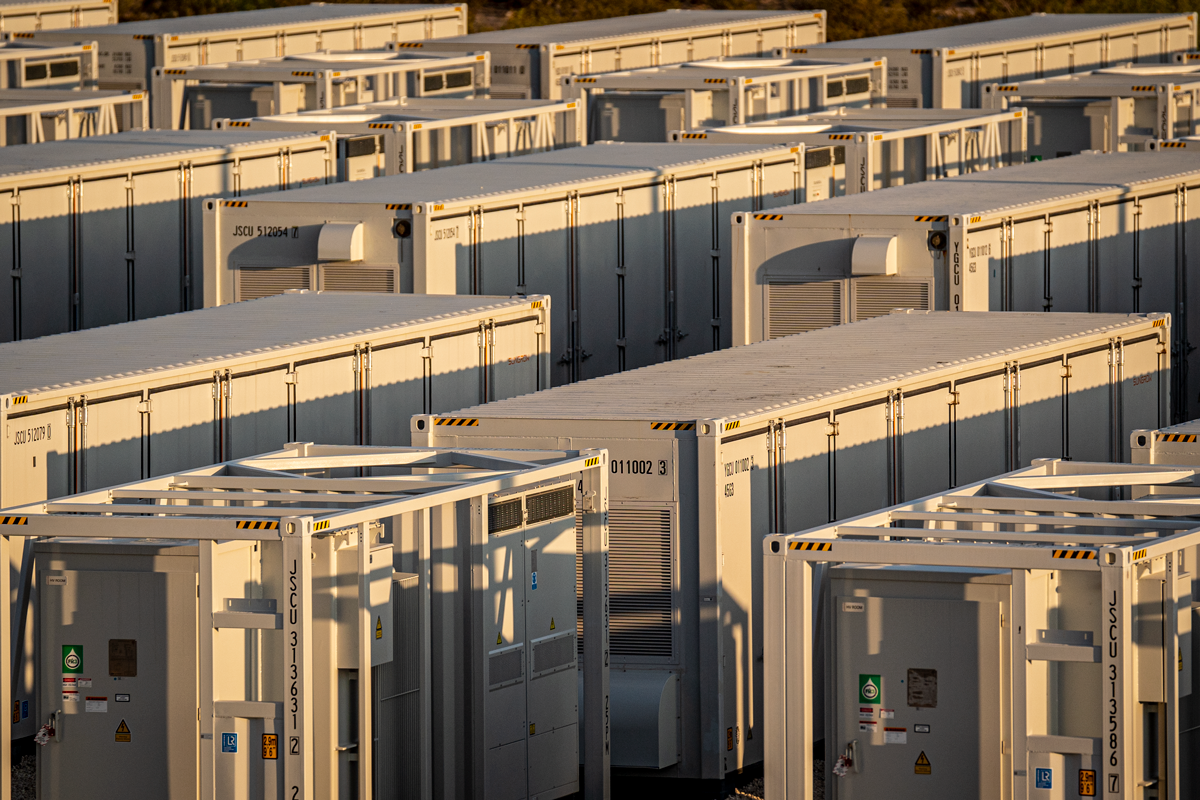Report: Houston Region Poised to Become a Global Clean Hydrogen Hub
Published May 23, 2022 by Laura Goldberg
With the U.S. Department of Energy set to announce plans for $8 billion in funding for clean hydrogen hubs across the country, a new report finds that Houston, long considered the “Energy Capital of the World,” is well positioned to leverage Texas’ vast energy resources to become a global clean hydrogen hub.
These energy resources include existing hydrogen production facilities and pipelines along the Gulf Coast, a base of large, sophisticated industrial energy consumers, and renewable energy assets across the state.
The report, released today by the Center for Houston’s Future, Houston as the epicenter of a global clean hydrogen hub, lays out how these assets can be leveraged to create a global clean hydrogen hub.
Find the report here.
Inspired by the unprecedented opportunity for Houston to lead the energy transition to a lowcarbon future, the report contains the most detailed assessment to date of the economic potential and environmental impact of clean hydrogen.
The report explains how clean hydrogen can be produced by adding carbon capture to current natural gas-based hydrogen plants or through electrolysis (the process that splits water into hydrogen and oxygen). Using these methods, the report shows how clean hydrogen can be an important tool in addressing climate change and reducing industrial emissions while creating high-paying jobs.
Clean hydrogen hubs are expected to emerge in regions where there is sufficient clean hydrogen supply and demand. Since the Houston region produces and consumes a third of the nation’s hydrogen and has more than 50 percent of the country’s dedicated hydrogen pipelines, the report provides a roadmap for how these assets can be utilized to accelerate a transition to clean hydrogen.
The report was created as part of the Greater Houston Partnership’s Houston Energy Transition Initiative, with input from more than 100 experts representing 70 companies and organizations along the hydrogen value chain. In addition, McKinsey and Company donated significant research and economic analyses for the report.
Among the findings in the study:
- Clean hydrogen production could grow 5x over current hydrogen production by 2050.
- The establishment of a clean hydrogen industry could create 180,000 jobs (direct, indirect and induced) statewide, while adding $100 billion to Texas' GDP growth.
- Globally, a Houston-led clean hydrogen hub could abate 220 million tons (MT) tons of carbon emissions by 2050.
“This report gives additional weight to the already strong case that Houston is uniquely positioned to lead a transformational clean hydrogen hub with global impact,” said Houston Mayor Sylvester Turner. “We can also deliver economic growth, create jobs and cut emissions across Houston and the Gulf Coast, including in underserved communities.”
Governments worldwide are looking to clean hydrogen to help meet net-zero carbon emission goals. In the U.S., the Department of Energy says clean hydrogen is crucial to President Biden’s goals for a 100% clean electrical grid by 2035 and of net-zero carbon emissions by 2050.
“The Houston region has the talent, expertise and infrastructure needed to lead the global energy transition to a low-carbon world. Clean hydrogen, alongside carbon capture, use, and storage are among the key technology areas where Houston is set up to succeed and can be an example to other leading energy economies around the world,” said Bobby Tudor, chair of the Greater Houston Partnership’s Houston Energy Transition Initiative.
The report describes a vision for how the hub could hit the ambitious cost targets proposed by the DOE in its recent Energy Earthshot initiative and meet strict emissions goals set out by Congress in the Bipartisan Infrastructure Law. The report discusses how achieving outcomes that support environmental justice, create good jobs, and incentivize US-based manufacturing are core to the vision of a successful clean hydrogen hub in the region.
"Using this roadmap as a guide and with Houston’s energy sector at the lead, we are ready to create a new clean hydrogen economy that will help fight climate change as it creates jobs and economic growth,” said Center for Houston’s Future CEO Brett Perlman. “We are more than ready, able and willing to take on these goals, as our record of overwhelming success in energy innovation and new market development shows.”
Selected key findings follow.
Vision and strategic roadmap
- The proposed 2050 vision could have massive impact on climate, jobs, and the economy, including an estimated 220 MT of global CO2 abatement, $100 billion in economic value, and the creation of 180,000 jobs.
- With the right policy framework, the hub could become the global leader in clean hydrogen production, application, development, and exports.
Demand
- Global demand for clean hydrogen is limited today, but we expect it to grow 6-8% each year on average between 2030-50. Hydrogen is expected to play a critical role in decarbonizing sectors such as industry, mobility, and power – potentially addressing 660 MT of demand by 2050, according to the Hydrogen Council.
- Demand for clean hydrogen in Texas alone could reach 21 MT by 2050 – vs. current demand of 3.6 MT for conventionally produced hydrogen. The expected demand in 2050 comprises 11 MT for local demand and a surplus of 10 MT for export.
- Export of hydrogen and hydrogen-based fuels is the largest driver of the increase, contributing ~10 MT of hydrogen demand.
- Industrial applications are the second largest driver, with feedstock and heating in sectors such as refining, petrochemicals, ammonia, iron and steel, and cement accounting for ~6 MT of hydrogen demand.
- Mobility, with ground transportation (trucks, light commercial vehicles, and buses) accounting for ~2.3 MT of hydrogen demand and marine and aviation accounting for ~1.5 MT of hydrogen and hydrogen-based fuel demand.
- Utility power generation, with energy storage and local grid natural gas blending accounting for ~1.6 MT of hydrogen demand.
Supply
- Clean hydrogen production costs for both electrolysis-based and natural gas-based hydrogen are expected to drop substantially. The estimated cost of producing natural gasbased hydrogen with carbon capture and storage in 2030 could meet the DOE’s goal of $1/kg of clean hydrogen. Electrolysis-based hydrogen could be reduced to as low as $1.5/kg by 2030 but will need further government support to hit the Department of Energy’s target.
- The region has natural advantages in developing cost-effective hydrogen transport and storage, given extensive oil and gas and hydrogen pipelines, experience in hydrogen storage, salt caverns, and port infrastructure.
- The Texas Gulf Coast is positioned to be the hydrogen export hub of the U.S., given our ability to compete with potential major exporters (e.g., Australia, Chile, and Saudi Arabia) on the delivered cost of hydrogen. Strategic considerations including security and reliability also provide advantages.
Impact of the Hub Across the Region and the State
- As the clean hydrogen ecosystem develops, we can see a variety of projects addressing supply, demand, and infrastructure spreading across the region, with concentrations in areas around Greater Houston, Corpus Christi and South Texas, Baton Rouge and New Orleans, Beaumont and East Texas, and extending to Dallas and the Texas Triangle, as well as West Texas.
Cross-cutting enablers
- Government commitments, direct incentives, and regulatory frameworks are among the major policy instruments for decreasing cost and increasing demand. In addition to federal policies, Texas and Louisiana should implement state-level policies to accelerate progress on the 2050 vision. More work is needed to flesh out appropriate options.
- Scaling hydrogen requires developing infrastructure, including hydrogen transport and storage, fueling stations, CO2 transport and storage, water purification and transportation, electricity transmission, port infrastructure, and a mature supply chain for critical materials.
- The hub would benefit from a vibrant innovation ecosystem, including a research consortium that fosters collaboration across institutional lines, a start-up network that leverages existing assets and demand in the region, a testing facility to scale and commercialize new technologies, and local equipment manufacturing
- Meeting the hub’s talent needs requires equitable workforce development programs. Community colleges, institutions of higher education, and companies could all play key roles in training a hydrogen economy workforce.
- The next phase of this work will focus on creating a demand-centric roadmap for 2022 through 2030. Our team will also explore hub funding requirements, sector-specific legal and regulatory unlocks, and ways to build the right coalition for an integrated effort to develop the hydrogen hub. Collectively, these actions will create the blueprint for Houston – as the energy capital of the world – and the Gulf Coast to lead the transition to clean hydrogen.
“By working together now, government, industry and community leaders can make a significant impact at home and across the world that will be felt for years to come,” Perlman said.
Learn more about the Center for Houston's Future and its work in hydrogen as well as the Partnership and HETI.
 The Houston Report
The Houston Report



















